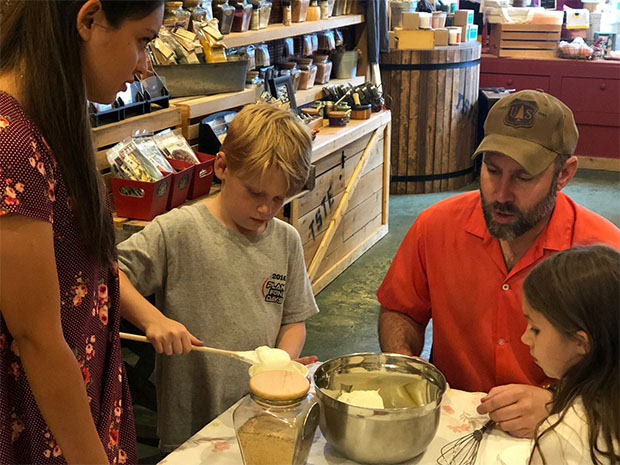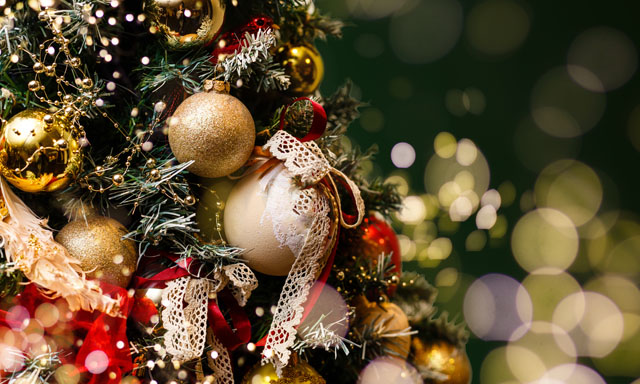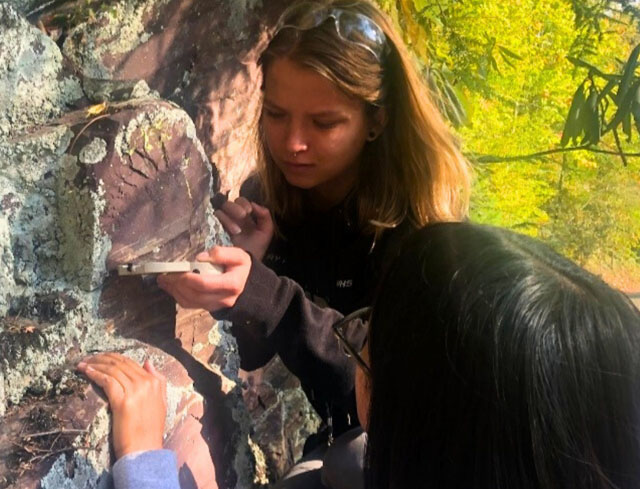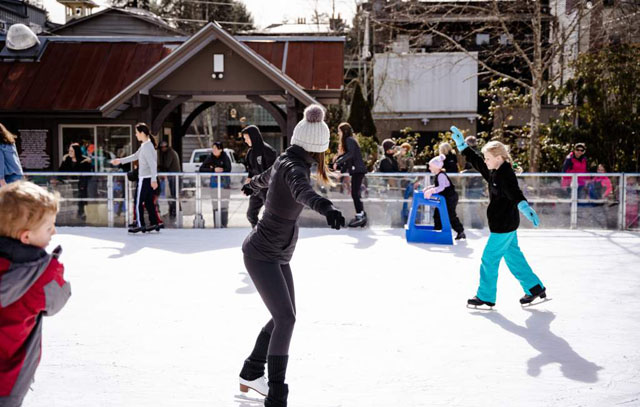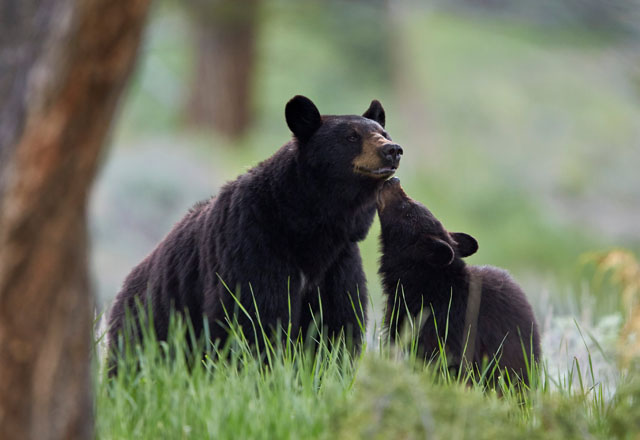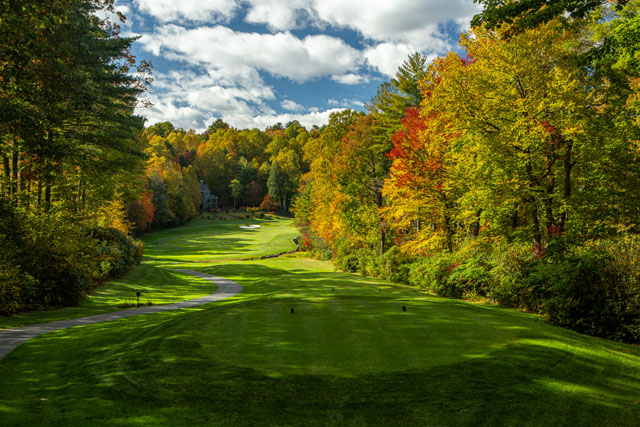The White Squirrels of Brevard
04 Apr 2021
Once escaped carnival acts, now these squirrels rule the town
By Brittany Conley
Photos by Jennifer Bursgin, Sheri Blythe
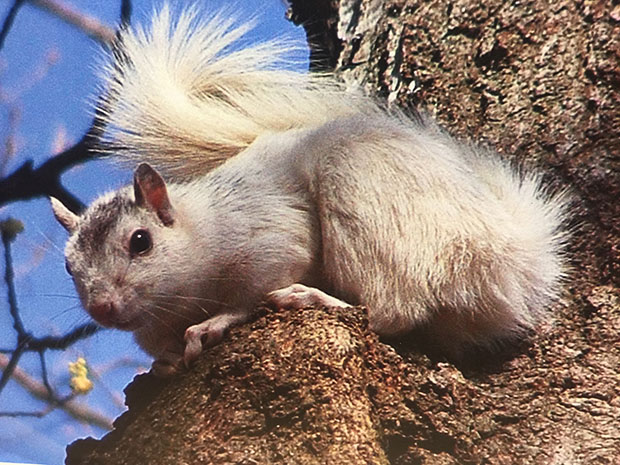
There is an adorably peculiar creature scurrying about one of Western North Carolina’s most beloved cities. Brevard is home to a rare species of white squirrels—they are not albinos but are mostly snow white with tufts of dark gray fur on their heads and sometimes streaking down their backs. If you’ve never seen one in person, you may think them a myth or perhaps a marketing tactic by the town. No doubt the animal is real. Their origin story, however, perhaps that is up for you to decide.
Fact or Legend?
It is said that sometime in the late 1940s, a traveling carnival passed by the home of a Mr. Black in Florida. A truck carrying an assortment of interesting animals of all shapes and sizes overturned near Mr. Black’s property. The fate of the other animals is unknown, but a short time after the accident, Mr. Black discovered a most curious sight flitting about his pecan grove: two alabaster squirrels, the likes of which he had never seen.
Mr. Black captured the escaped carnival acts and eventually gifted them to a beloved niece, Barbara, of Brevard, NC. In captivity, the squirrels refused to mate and, yearning for freedom again, one of them absconded into the Pisgah Forest. The other was soon released, both thought to be gone forever. Yet, in the wild, the pair thrived. Over the years, sightings of their descendants popped up all over Brevard and Transylvania County.
Fabled Favorites
It is a fun story to believe—and many locals do, including Katy Rosenberg, the director of the White Squirrel Institute, a nonprofit organization dedicated to the conservation and preservation of Brevard’s white squirrels. “The story varies,” says Rosenberg, “but I do believe they came from Florida...and they came to live with [Barbara] and began breeding in the wild.”
Regardless of whether Brevard’s white squirrels descended from two precocious carnival escapees or are simply the product of a genetic fluke, one thing is for certain: they are some of the most beloved residents in town. So loved, the town hosts a yearly festival each May in their honor. The White Squirrel Festival brings in local artisans, delicious food, music, races and more. Unfortunately, this cherished celebration has been postponed until further notice due to the pandemic, but it is one not to miss once it returns.
The festival isn’t the only time the city comes together to celebrate its favorite animal. Every February 2nd, the famous groundhog, Punxsutawney Phil, has some serious competition. Brevard gets its weather predictions from Pisgah Pete, a rescued white squirrel, and the town’s adorable ambassador. This local celebrity also has quite the knack for picking the winning Super Bowl team, predicting correctly four of the last five years.
If you’re keen to spot a white squirrel, knowing where to look is key. Contrary to the advice for most wildlife sightings, the best place to catch a glimpse of these critters isn’t in the woods, but instead they thrive in town, with larger populations at the college campus and behind the Visitor Center. While you might see one along a trail or near a waterfall, because of their lack of camouflage, white squirrels are better protected within the city limits, where their natural predators are fewer in number—and protecting the squirrels’ welfare is something the city of Brevard takes seriously.
Safeguarding the Squirrels
In 1986, an ordinance was passed to prevent people from harming or trying to trap white squirrels for pets. In 1997, efforts to ensure the species’ future went even further when the White Squirrel Institute was formed by Dr. Robert Glesner and a group of students from Brevard College. What started as a project meant to keep a sort of census of the animals blossomed into full-blown research, stewardship programs and rehabilitation efforts.
While on your quest to see them, you can help protect the white squirrel population by paying close attention to your driving. “...Mind the speed limits and keep an eye out for them crossing the road,” says Rosenberg. “Be careful not to disturb their nests,” she adds, explaining that they don’t look much different than a bird’s nest in a tree. Undisturbed nests are of vital importance, especially during the spring mating season.
For more information or to adopt a white squirrel, you can visit the institute’s website at www.WhiteSquirrelInstitute.org and follow them on Facebook and Instagram.


